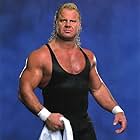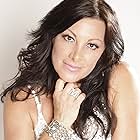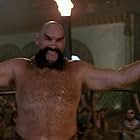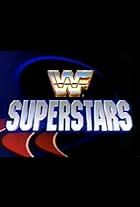Syndicated series featuring wrestling matches as promoted by the American Wrestling Association (AWA).Syndicated series featuring wrestling matches as promoted by the American Wrestling Association (AWA).Syndicated series featuring wrestling matches as promoted by the American Wrestling Association (AWA).
Browse episodes
Featured reviews
Back in the early 80's "AWA Wrestling" on "ESPN" was some of my first exposure to the ring and the action was fun most of it out of Minnesota and other regional regions. True the league did not have the budget of "WWF" or "NWA" still it was fun and entertaining with Hall, Henning, Gagne, and the Freebirds, plus the legendary "Road Warriors" started here! This league was like a little bit of food club or B list wrestling still it was a springboard for fun action between the ropes! Like an appetizer before the juicy steak!
Remember when they had such wrestlers as Tom "Rocky" Stone, Jake "The Milkman" Milliman, Rooster Griffin, Sammy Darrell, that pear shaped wrestler Herman Schafer, Nacho Barrara, The Black Panther, Coco Lewis, Angel Rivera, John Hill and his war dance, Chris Curtis, Paul Gardner, Rocky King, The Beast from Argentina, Hollywood Nelson, Spike Huber "who should of been better than a preliminary wrestler" Brian Knobs, Jerry Sags, Rick Hunter, Kenny "KO" Kaos, Ron Ritchie, Freddy "Puppy Dog" Pelequin, Craig Carson, The Zulu, "Torpedo" Guzman, Tom Zenk,and Sonny Rogers. And they described Col DeBeers as "The mercenary from South Africa, champion of apartheid!
I watch them in Wrestlemania, Summer Slam, Survivor series and the Royal rumble. However, where did these wrestlers come from and how did they get started? Just like any other profession, before you make it to the big leagues you have to pay your dues somewhere. The AWA Wrestling association so you how the wrestlers got there start and the dues that they had to paid to before making it big in the WWF. Sergeant Slaughter and Jerry Blackwell take on the Road Warriors Hawk and Animal for the AWA Tag Team Championship. The Incredible Hulk Hogan takes on Mr. Saito and Dr. Dave Shultz in a handy cap match. You'll here Mean gene Okerland name mention as the time keeper. Rick Martel and Tito Santana face of against Jim Brunzell and Greg Gagne for some AWA Gold inside of a steel cage. You'll also see the East and West Connection also know as Jessie The Body Ventura and Adorable Adrian Adonis. Heavyweight Champion Nick Bockwenkle takes on terry Allen who went on to WCW as Magnum TA. Now let's talk about the legend of Andre the Giant. Andre was born may 19th 1946. His grandmother measured in at 7 foot 8 inches. At age 12, Andre was already a very big boy standing 6'4 and weigh over 200lbs. Andre was working as furniture maker when he was approached about being a wrestler. Andre started wrestling when he was 17 years old. At the age of 19, Andre was over 7 feet tall and 335 lbs. One of Andre matches in AWA was against Jerry Blackwell who weighs over 473 lbs himself. This was a $5000.00 slam match on 11-4-80 with the first wrestler to slam the other gets the cash. Andre was introduced to his first battle royal on October 17 1982, where the winner of this match gets 100 thousand dollars. Some of the wrestlers that were in the ring at the time were jerry Blackwell, Jessie Ventura, Bobby Heenan, Nick Bockwenkle, and Ken Patera. Then on November 11th 1982 Hulk Hogan and Andre the Giant teamed up together to face the Nick Bockwenkle, Ken Patera, Dungam and Heenan himself. Wahoo McDaniel also made his debut in the AWA in 1969 before he went to WCW also. Other wrestlers that came up through the AWA were The Fabulous Freebirds, Curt Henning, Rick Flair, and Magnum TA. Larry Zbysko, Superstar Billy Graham. If you think that Vince McMahon is the only owner to get into a ring then you never saw Verne Gagne wrestle. I believe that most of Vince McMahon's ideas in the early years were taken from the AWA. At Wrestlemania, two when Rowdy Roddy Piper faces Mr. T in a boxing match that idea had already been used by the AWA. The idea of the Heenan family also was used in the AWA. Vince didn't make Hulk Hogan the legend that he is because he also use the same name in the AWA it was also funny watching Mean Gene Okerland move up the ranks from a time keeper, to doing locker-room interviews to doing wrestling commentary. The match between the Andre the Giant and Big John Studd at Wrestlemania one as the 15 thousand dollar slam match also came from AWA. If you think about it, most of McMahon idea came from other wrestling organization. If you really watch this DVD, you'll fine that if it wasn't for the AWA, I don't think the WWF would be where it's at today. In addition, you see that some of the wrestlers were in two different organizations also. For instant Ric flair was wrestling in the AWA at the same time that he was wrestling for World Championship Wrestling. Overall, I give this picture 10 weasel stars because it was such a revelation as far as understanding the world of professional wrestling back in the late 70s and early 80s.
While the American Wrestling Association (AWA) did appear on ESPN from 1985 until it folded in 1990, "All Star Wrestling" predated ESPN by 25 years.
Back in the 1960's, the AWA, based out of Minneapolis, ran house shows (live wrestling cards) in the Midwest. The main markets would usually have one house show scheduled every two weeks, while the minor markets would get one show per month.
The television show "All Star Wrestling" was essentially a one-hour paid advertisement for the AWA house shows. Every two weeks, many of the wrestlers who were currently working the house shows for the AWA would assemble at a studio in Minneapolis Minnesota. They would wrestle jobbers (lesser wrestlers) in squash jobs (one-sided victories) that seldom lasted more than a few minutes each. Then they would do as many different interviews as were needed, tailored to whatever opponents they were scheduled to meet at the various house shows during the coming two weeks. Editors would splice together the appropriate interview and wrestling footage for each individual house show and send the canned one-hour production to the TV stations in the respective market. The AWA bought 60 or 90 minute time slots each week at the TV stations. The shows usually ran on a Saturday or Sunday morning (when TV time was relatively inexpensive). The shows were shot in black and white throughout the 1960's and some of the 1970's, and in color thereafter.
The early shows followed a standard format: There would be a squash match featuring a wrestler appearing at the upcoming house show; then the wrestler would appear in an interview and promise to vanquish his opponent. Then the opponent would appear in a squash match, followed by his interview. After each interview, the viewer would be reminded of the the date, time, and location of the house show. This would continue throughout the 60-90 minutes and include as many of the wrestlers appearing at the upcoming house show as possible, as well as other well-known wrestlers in the AWA who might be appearing in the near future. For wrestlers who could not appear in Minneapolis on the date the taping was produced, footage of one of their old squash matches would be spliced in, and the wrestlers might do the interview for the house show weeks before the actual house show. Taping the interviews well in advance wasn't a problem, as most matches (and most results) were already known weeks or months in advance.
The shows of the 1960's and early 1970's were basically one-hour commercials for the next house show, and third party advertisers were almost nonexistent. In the early 1970's, as wrestling became more popular, national companies such as McDonalds and local companies such as car dealerships bought commercial spots on the shows.
Back in the 1960's, the AWA, based out of Minneapolis, ran house shows (live wrestling cards) in the Midwest. The main markets would usually have one house show scheduled every two weeks, while the minor markets would get one show per month.
The television show "All Star Wrestling" was essentially a one-hour paid advertisement for the AWA house shows. Every two weeks, many of the wrestlers who were currently working the house shows for the AWA would assemble at a studio in Minneapolis Minnesota. They would wrestle jobbers (lesser wrestlers) in squash jobs (one-sided victories) that seldom lasted more than a few minutes each. Then they would do as many different interviews as were needed, tailored to whatever opponents they were scheduled to meet at the various house shows during the coming two weeks. Editors would splice together the appropriate interview and wrestling footage for each individual house show and send the canned one-hour production to the TV stations in the respective market. The AWA bought 60 or 90 minute time slots each week at the TV stations. The shows usually ran on a Saturday or Sunday morning (when TV time was relatively inexpensive). The shows were shot in black and white throughout the 1960's and some of the 1970's, and in color thereafter.
The early shows followed a standard format: There would be a squash match featuring a wrestler appearing at the upcoming house show; then the wrestler would appear in an interview and promise to vanquish his opponent. Then the opponent would appear in a squash match, followed by his interview. After each interview, the viewer would be reminded of the the date, time, and location of the house show. This would continue throughout the 60-90 minutes and include as many of the wrestlers appearing at the upcoming house show as possible, as well as other well-known wrestlers in the AWA who might be appearing in the near future. For wrestlers who could not appear in Minneapolis on the date the taping was produced, footage of one of their old squash matches would be spliced in, and the wrestlers might do the interview for the house show weeks before the actual house show. Taping the interviews well in advance wasn't a problem, as most matches (and most results) were already known weeks or months in advance.
The shows of the 1960's and early 1970's were basically one-hour commercials for the next house show, and third party advertisers were almost nonexistent. In the early 1970's, as wrestling became more popular, national companies such as McDonalds and local companies such as car dealerships bought commercial spots on the shows.
Yes AWA wrestling how can anyone forget about this unreal show. First they had a very short interviewer named Marty O'Neil who made "Rock n Roll" Buck Zumhofe look like a nose tackle. Then it was Gene Okerland who when he got "mad as the wrestler" would say either "Were out of time" or "Well be right back" acting like he was mad but actually sounding forced. After he went to the WWF Ken Resneck took over even though his mustache looked like week old soup got stuck to it was a very fine interviewer who "Georgeous" Jimmy Garvin called mouse face which made me fall off my chair laughing. After he jumped ship then Larry Nelson came on board which he was so bad that Phyllis George would of been an improvement! Then there's Doug McLeod the best wrestling announcer ever who made every match exciting with his description of blows! Then he was offered more pay by the Minnesota North Stars hockey team. At ringside who can forget Roger Kent who's mispronouncing of words and sentences were historic Like when a wrestler was big "Hes a big-on!" punched or kicked in the guts "right in the gussets"or when kicked "He punted him" or "the "piledriver should be banned" after Nick Bockwinkle used it on a helpless opponent.(Right Roger like you care!) After he left to greener money(WWF) they had Rod Trongard who's announcing style was great but different. Like when a wrestler scraped the sole of his boot across another guys forehead he'd say"Right across the front-e-lobe" or when a wrestler is in trouble "Hes in a bad bad way". He also would say AWA the baddest,toughest,meanest, most scientific wrestlers are here right in the AWA!(No extra money Verne Gagne!) After he left(WWF) Larry(Wheres Phyllis?!) Nelson took over and I would talk to someone else or totally ignore him.(WWE wisely didn't take him!) Also Greg Gagne had the ugliest wrestling boots I ever saw a yellow color of something I don't want to say.Also when hes looking for the tag he looks like he wants to get it over with so that he can run to the nearest restroom! Jumpin Jim Brunzell was such a great dropkick artist that you wonder why Greg was ever his partner. Jerry Blackwell(RIP)was also a superstar wrestler but you wonder why Verne had himself win against him.(Puhleeeeze!) Then when Vince McMahon would hire Gagnes jobbers, he would make most of them wrestle squash matches. I like to see the Gagne family say wrestlings real now!
Storyline
Did you know
- ConnectionsFeatured in WWE Legends: Greatest Wrestling Stars of the '80s (2005)
Details
- Color
Contribute to this page
Suggest an edit or add missing content

Top Gap
By what name was AWA All-Star Wrestling (1972) officially released in Canada in English?
Answer














